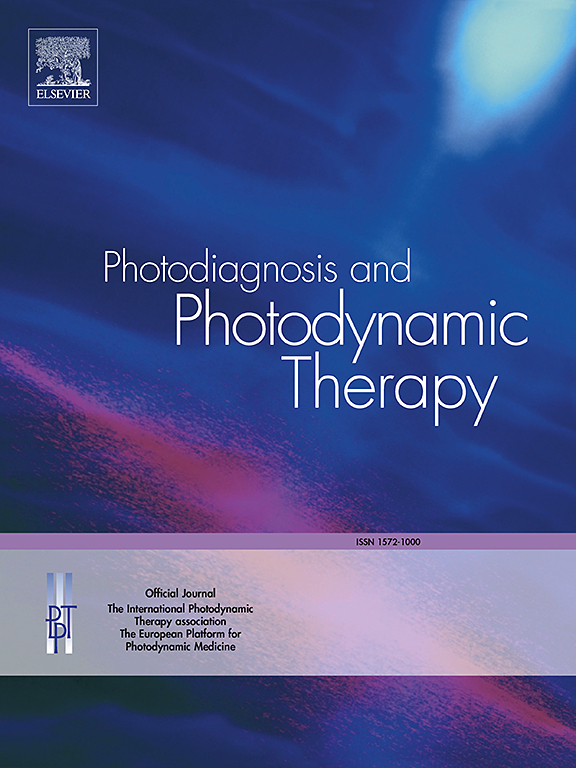A comparative analysis of Mohs micrographic surgery with or without photodynamic therapy for locally advanced basal cell carcinoma
IF 3.1
3区 医学
Q2 ONCOLOGY
引用次数: 0
Abstract
Background
Locally advanced basal cell carcinoma (laBCC) is a more severe subtype of BCC, characterized by large, deeply invasive tumors that often occur in cosmetically or functionally sensitive areas. Mohs micrographic surgery (MMS) is the standard treatment, offering high cure rates through layer-by-layer excision with microscopic margin control. However, MMS alone may not entirely prevent recurrence in aggressive or infiltrative subtypes. Photodynamic therapy (PDT) is a non-invasive treatment modality that may enhance outcomes when used adjunctively. This study evaluated whether combining MMS with PDT offers advantages over MMS alone for laBCC.
Method
A retrospective cohort study was conducted with 63 patients diagnosed with laBCC, categorized by histological subtype into aggressive and non-aggressive groups. Patients were not randomized; they received either MMS alone or MMS followed by PDT based on clinical decision-making at treatment time. Clinical outcomes were analyzed, including recurrence, recurrence-free survival (RFS), and surgical margins.
Results
MMS group exhibited a low recurrence rate of 4.4 %, against 22.2 % for MMS+PDT group. Non-aggressive tumours such as superficial, nodular, and adenoid types, treated with MMS and PDT had a 16.7 % recurrence rate, compared to 25 % for aggressive tumours, including Infiltrating, Basosquamous, and morphea form types. This suggests that non-aggressive cases may respond better to PDT. Additionally, the mean recurrence-free survival(mRFS) time was about 54 months (95 % CI: 50- 57.3 months) for non-aggressive tumours, while aggressive tumours had a mean survival of 52.3 months (95 % CI: 51–56.2 months), indicating a potential trend favouring non-aggressive tumours.
Conclusion
MMS combined with PDT show favourable outcomes in non-aggressive BBC.
mohs显微手术治疗局部晚期基底细胞癌的比较分析。
背景:局部晚期基底细胞癌(laBCC)是一种更严重的基底细胞癌亚型,其特征是大的、深度浸润的肿瘤,通常发生在美容或功能敏感区域。莫氏显微手术(Mohs micrographic surgery, MMS)是标准的治疗方法,通过一层一层的切除和显微边缘控制,提供了很高的治愈率。然而,单靠MMS可能无法完全预防侵袭性或浸润性亚型的复发。光动力疗法(PDT)是一种非侵入性治疗方式,当辅助使用时可以提高疗效。本研究评估了MMS联合PDT是否比MMS单独治疗laBCC更有优势。方法:对63例确诊为laBCC的患者进行回顾性队列研究,按组织学亚型分为侵袭性组和非侵袭性组。患者不是随机的;他们要么单独接受MMS,要么在治疗时根据临床决策接受MMS后再接受PDT。分析临床结果,包括复发、无复发生存(RFS)和手术切缘。结果:MMS组复发率为4.4%,而MMS+PDT组复发率为22.2%。非侵袭性肿瘤,如浅表性、结节性和腺样体类型,MMS和PDT治疗的复发率为16.7%,而侵袭性肿瘤,包括浸润性、Basosquamous和morphea形式类型的复发率为25%。这表明非侵袭性病例可能对PDT反应更好。此外,非侵袭性肿瘤的平均无复发生存期(mRFS)约为54个月(95% CI: 50- 57.3个月),而侵袭性肿瘤的平均生存期为52.3个月(95% CI: 51-56.2个月),表明非侵袭性肿瘤的潜在趋势。结论:MMS联合PDT治疗非侵袭性BBC效果良好。
本文章由计算机程序翻译,如有差异,请以英文原文为准。
求助全文
约1分钟内获得全文
求助全文
来源期刊

Photodiagnosis and Photodynamic Therapy
ONCOLOGY-
CiteScore
5.80
自引率
24.20%
发文量
509
审稿时长
50 days
期刊介绍:
Photodiagnosis and Photodynamic Therapy is an international journal for the dissemination of scientific knowledge and clinical developments of Photodiagnosis and Photodynamic Therapy in all medical specialties. The journal publishes original articles, review articles, case presentations, "how-to-do-it" articles, Letters to the Editor, short communications and relevant images with short descriptions. All submitted material is subject to a strict peer-review process.
 求助内容:
求助内容: 应助结果提醒方式:
应助结果提醒方式:


